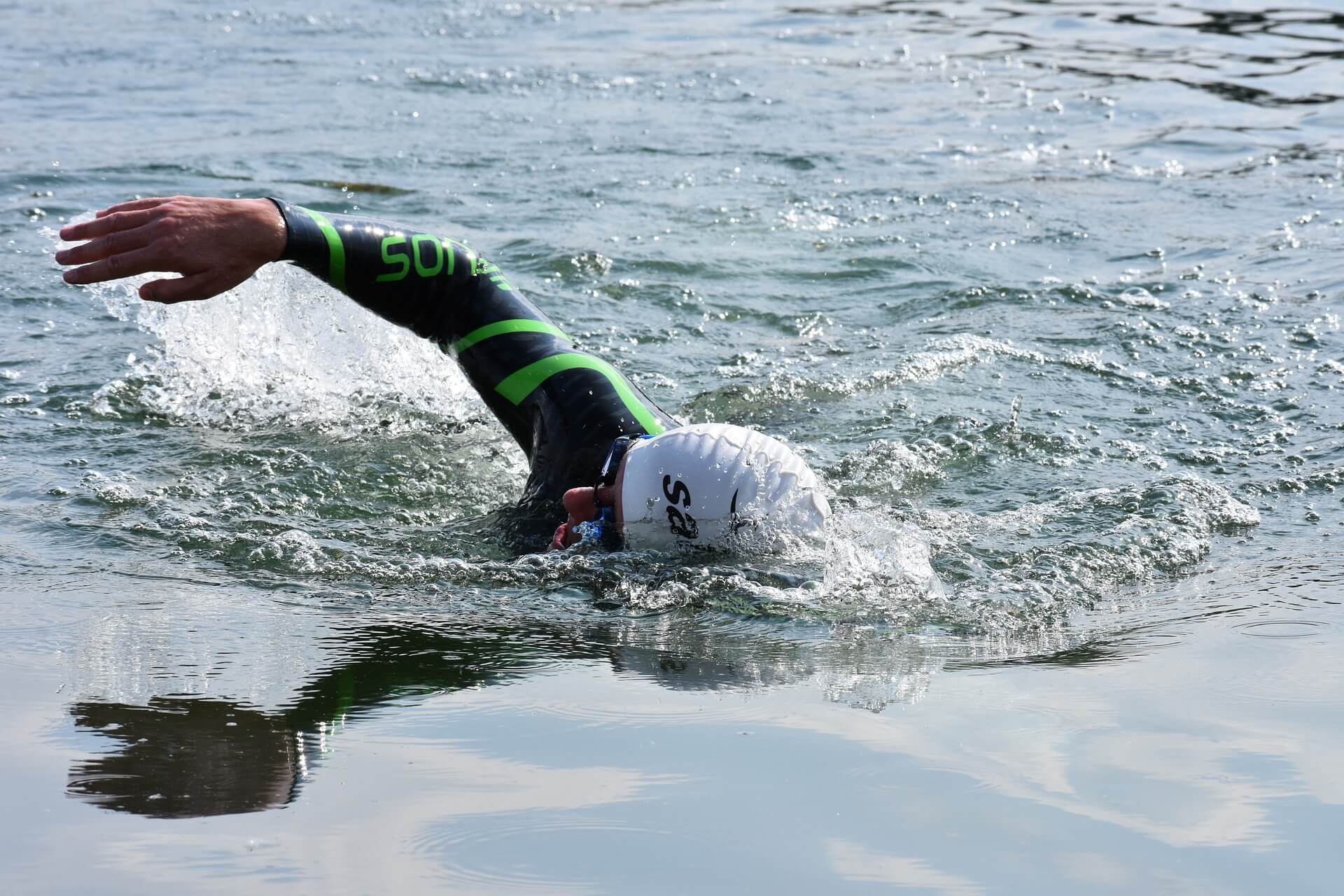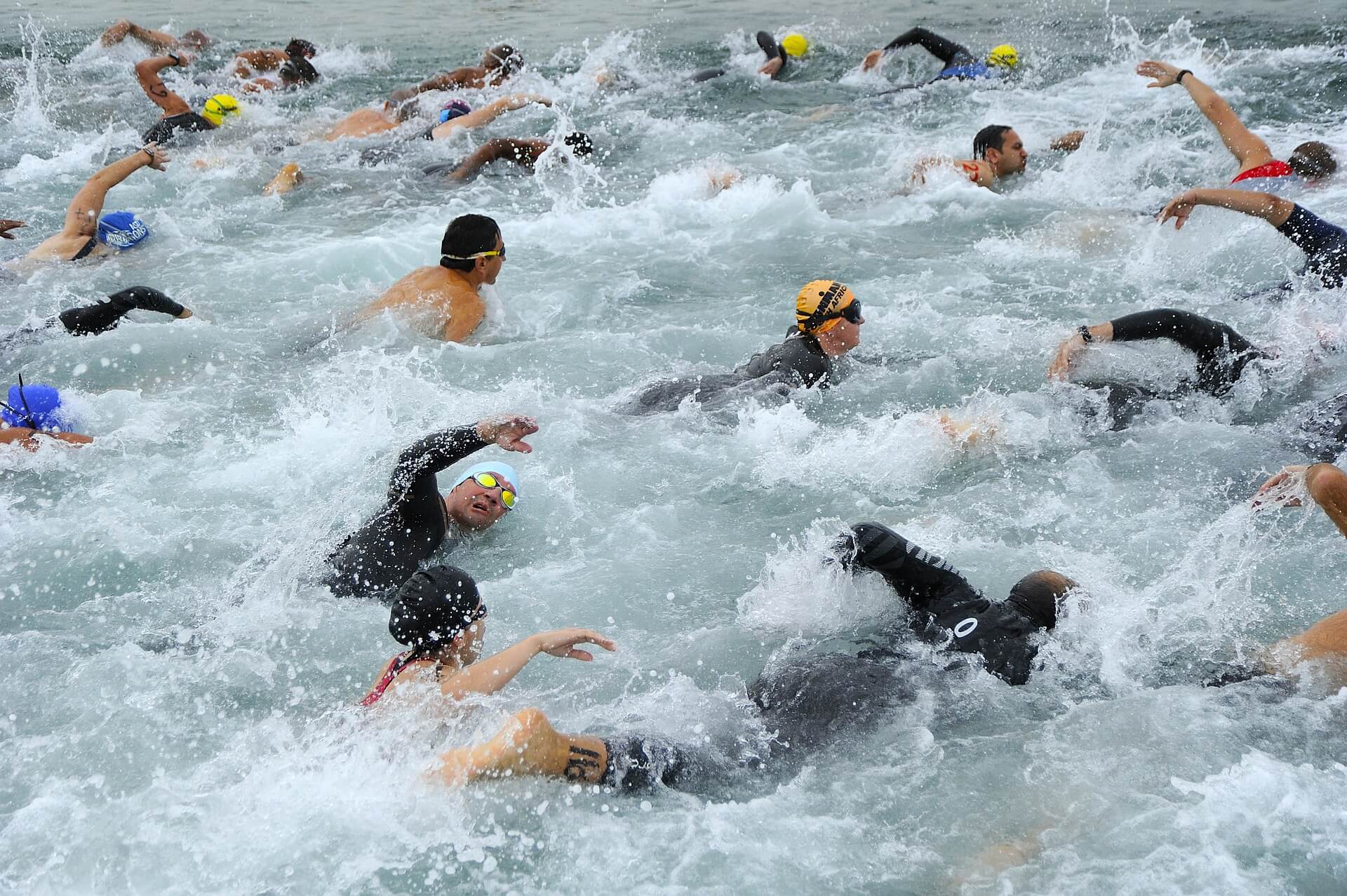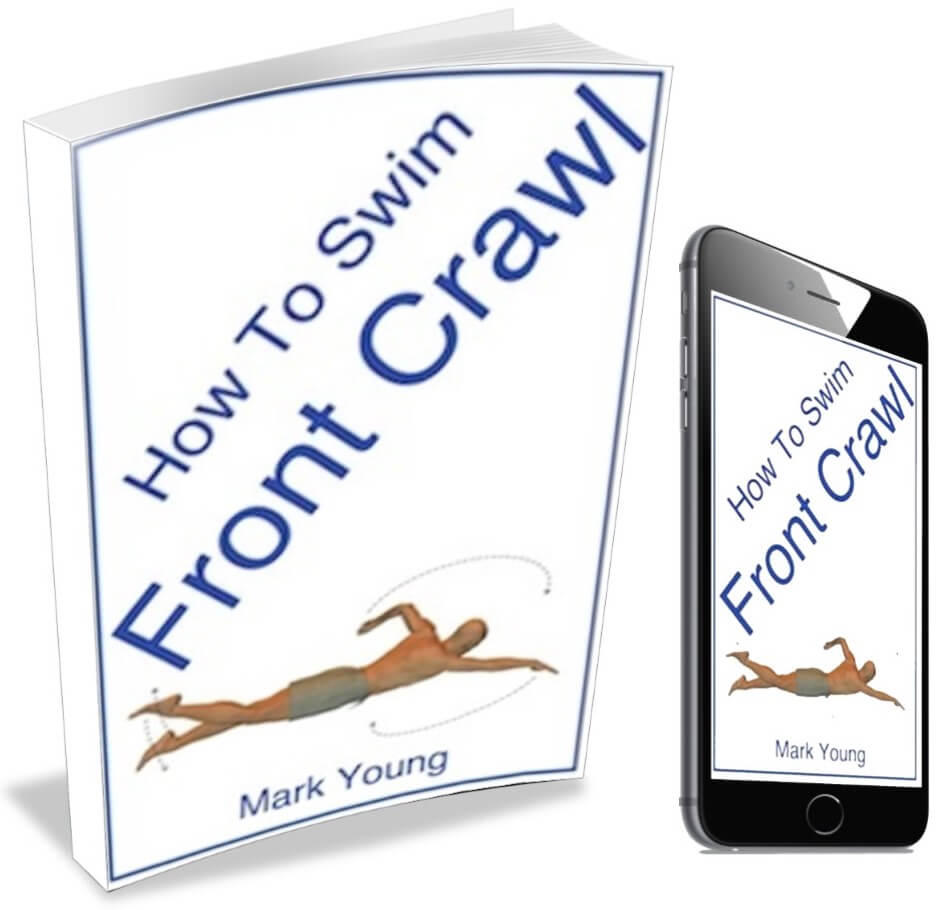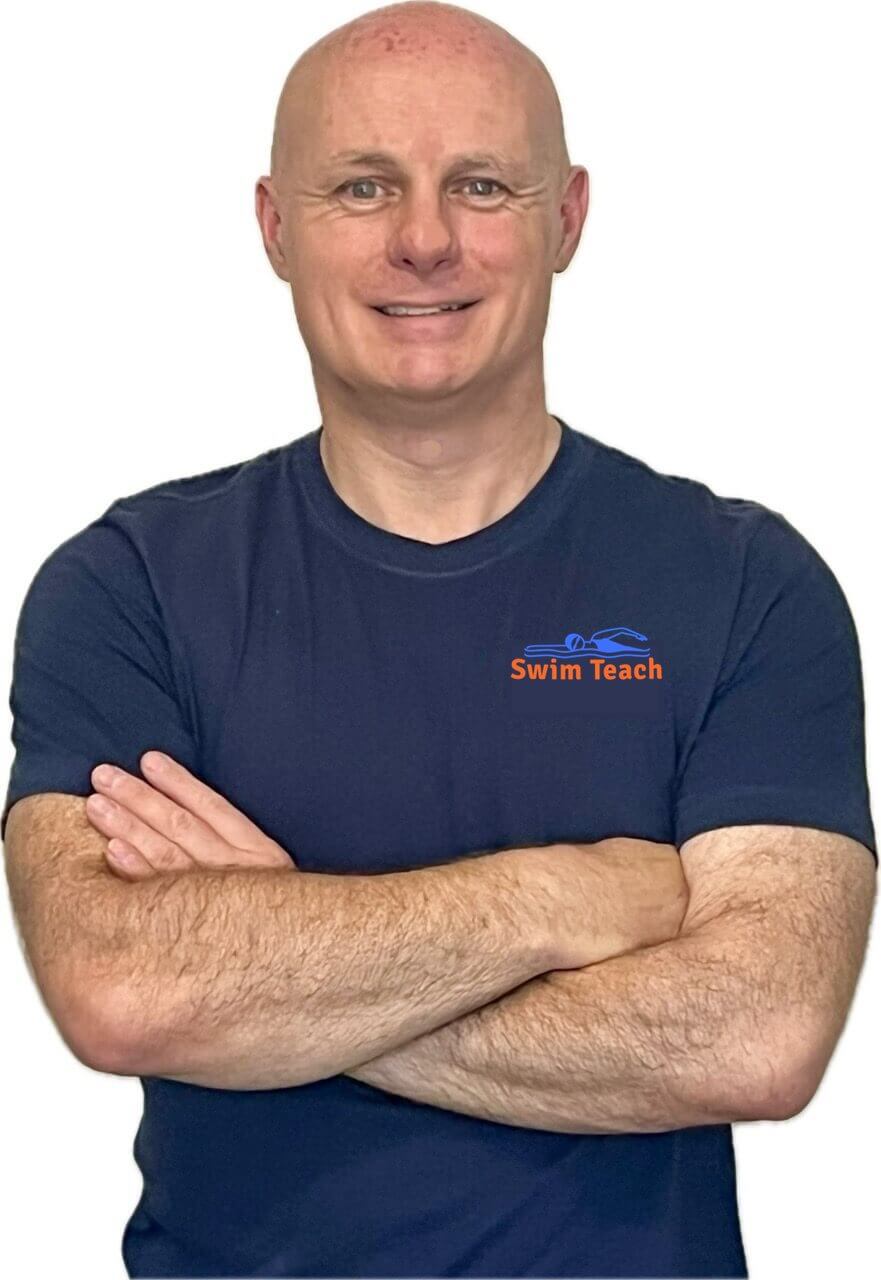- Swim Teach Home
- front crawl
- Triathlon Swimming
Triathlon Swimming
Get the basics right and get ahead...
For most triathletes, swimming is their nemesis, so a basic triathlon swimming technique is vital to get an advantage over others whose swimming is their weakness. The changeable open water conditions of a triathlon are very different to the calm controlled environment of the swimming pool, so swimming technique has to be adapted accordingly.

Front crawl, also referred to as freestyle, is the choice of most triathletes as it is the fastest and most efficient and streamlined of the four basic swimming strokes. However, that speed comes at a price - high energy consumption, rapidly leading to fatigue and exhaustion. Not the best at the beginning of your triathlon.
The triathlete must be able to change and adapt their swimming technique to the conditions of open water. Factors such as weather, water current and surrounding athletes will all have an effect on swimming strokes.
Some simple changes to the stroke timing, the breathing pattern and arm action can bring some huge savings in energy and help to adapt to the conditions of open water swimming.
Change Your Breathing Technique
Standard front crawl breathing should be a bilateral (breathing both sides) every three arm pulls. This means a breath is taken to one side and then to the other after three arms pulls. This alternating bilateral pattern, for some swimmers, can be tiresome after a short time.
 triathlon swimmers
triathlon swimmersPossibly a more efficient breathing pattern is to take a breath every other stroke to the same side. In other words breath every stroke cycle (every two arms pulls) to the same side. Some swimmers find this breathing pattern easier and more sustainable.
Periodically changing the side the head is turned to is recommended to prevent muscle imbalances in the neck and shoulders. It is also important to be competent breathing to both sides as open water conditions during a triathlon can be very different to the calm waters of a swimming pool. Therefore, you may need to breathe to the non-dominant side to avoid waves from other swimmers in close proximity or to avoid the glare of the sun.
The amount the head is turned for triathlon swimming technique can be very different too. Open water can be choppy and unpredictable and breathing close to the water surface as in a pool can be near to impossible with taking in a lung full. Therefore turning the head towards the shoulder or the arm pit can make for a cleaner inhalation in these difficult conditions.
Avoid breath holding as this too is very energy consuming and can be exhausting over a short time.
Change Your Timing Pattern
Long distance endurance swimmers such as triathletes tend to swim front crawl using a one beat timing pattern. In other words one leg kicks down as one arm pulls, so that the leg movements balance the arm actions. This is more energy efficient than using the leg kick to generate some propulsion.
Front crawl leg kick does generate some movement through the water but it is very tiring so the propulsive emphasis should be placed on the arms. The energy saved from a reduced leg kick will out weigh the lost propulsion over an endurance event and this is especially an advantage to a triathlete who needs their legs to cycle and then run.
Adjust Your Arm Action
The calm and controlled environment of a swimming pool allows a steady arm pull and recovery and constant stroke length and stroke rate. The open water conditions of a triathlon however require some subtle changes to front crawl arm action.
The arm might need to recover much higher over the water surface due to waves or the choppy waters and the arm pull and reach length may need to be shorter at times due to the surrounding athletes being very close.
The triathlete needs to take these into consideration when training and be prepared to change and adapt their triathlon swimming technique during the course of a swim.
Practice Your Triathlon Swimming Technique
Try this complete swimming workout that incorporates specific swimming exercises designed to improve and fine-tune your triathlon swimming technique, and at the same time enhance stamina and cardiovascular fitness.
This triathlon workout uses interval training as well as specific swimming exercises that isolate parts of the swimming stroke such as the arms, the body position or the breathing, to help focus on the finer aspects of your swimming technique. Download it here.
The total distance swum for this triathlon workout is 1000m but the distances for each part can be changed according to your swimming ability or the distance of the triathlon you are training for.
Need some Freestyle tips for your triathlon?
Take your triathlon swimming technique to the next level and get an edge on your competitors. Specific exercises to help fine-tune your body position, breathing and timing and coordination.
Unlock your new personal best below by downloading a copy of How To Swim Front Cawl to your device, or click here for more details.
 How To Swim Front Crawl
How To Swim Front Crawl$9.99

I am a member of the Amazon Associates Program and I will earn a commission from qualifying purchases at no extra cost to you.




